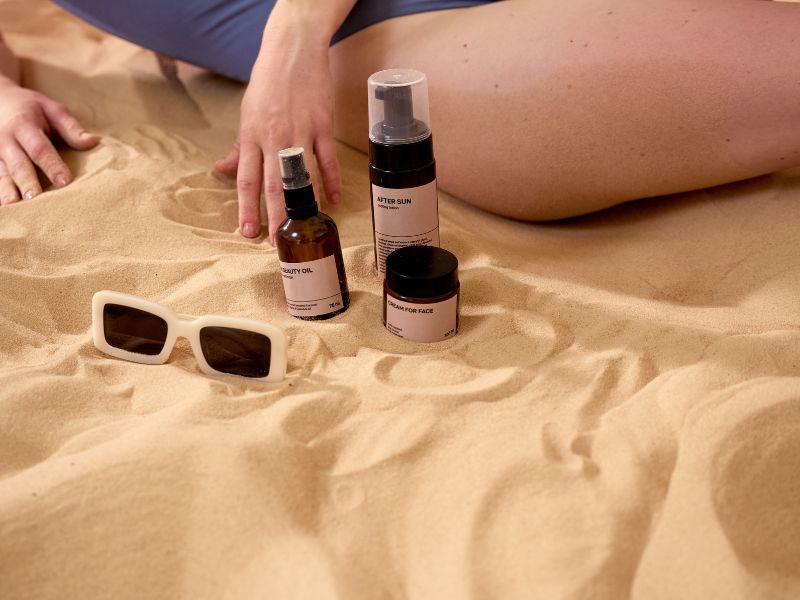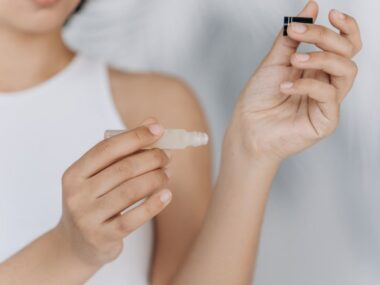With skincare products becoming more specialized, the question of whether you can use face sunscreen on your body has become a common inquiry. Sunscreen is essential in safeguarding skin from harmful ultraviolet (UV) radiation, which can cause skin damage, premature ageing, and increase the risk of skin cancer. Given the often higher cost and specific formulation of face sunscreens, it’s important to understand their effectiveness on body skin and any potential trade-offs. This guide looks into the components, benefits, and limitations of face sunscreen on body application, supported by extensive research across dermatology and skincare resources.
Differences Between Face and Body Sunscreens
One primary distinction between face and body sunscreens is their formulation. Face sunscreens are typically developed with more sensitive skin in mind, focusing on hydration, minimizing irritation, and avoiding pore-clogging ingredients. Body sunscreens, however, prioritize broader coverage and durability, often providing a stronger layer of protection to withstand sweat, water, and physical activity.
Texture and Absorption
Face sunscreens are often lighter and faster-absorbing, leaving a more subtle finish suitable for makeup application or all-day wear. Body sunscreens may have a thicker texture since body skin can generally handle richer products without issues like breakouts. However, some modern body sunscreens are adopting lighter formulations similar to those for the face, to appeal to those looking for non-greasy options.
SPF and PA Ratings
SPF, or Sun Protection Factor, measures protection against UVB rays, which primarily cause sunburn. The SPF rating is present on both face and body sunscreens, but face sunscreens might include additional ratings like PA (protection against UVA rays, which penetrate deeper into the skin) to cater to concerns about skin ageing and dark spots. UVA protection is crucial for preventing photoaging and maintaining an even skin tone, which is often prioritized in face sunscreens.
Ingredients and Additives
Face sunscreens frequently include skin-nourishing ingredients like antioxidants, peptides, and moisturizing agents that can benefit facial skin by counteracting environmental damage and maintaining hydration. Ingredients like niacinamide, hyaluronic acid, and ceramides are popular in facial formulations, as they enhance skin elasticity and barrier function. Body sunscreens, while still protective, may contain fewer specialized ingredients. They are also less likely to be “non-comedogenic” (non-pore-clogging), as the body’s skin is less prone to acne.
Can I Use Face Sunscreen On My Body: Drawbacks vs Benefits
Using face sunscreen on your body is both possible and safe. However, this approach may not always be practical or cost-effective. Here’s a breakdown of factors to consider when deciding whether to apply face sunscreen to your body.
Practicality and Cost
Face sunscreens are generally more expensive per ounce compared to body sunscreens. Since body skin covers a much larger area, using a face-specific sunscreen could lead to faster depletion and higher costs over time. For example, applying the recommended amount of sunscreen—about one ounce (a shot glass size) per full-body application—would quickly use a standard facial sunscreen bottle. Investing in a dedicated body sunscreen can be more economical for those on a budget or those who spend long hours outdoors.
Efficacy and Protection
The protective qualities of face and body sunscreens do not inherently differ, as long as both provide broad-spectrum (UVA and UVB) protection and have adequate SPF ratings. Dermatologists recommend SPF 30 or higher for reliable daily protection, which both face and body sunscreens often provide. So, technically, face sunscreen will protect the body’s skin effectively; the challenge primarily lies in application consistency and volume.
Sensitivity Considerations
Individuals with sensitive skin, eczema, or other skin conditions may benefit from using face sunscreen on their bodies, as these products are often formulated to minimize irritation. Hypoallergenic and fragrance-free face sunscreens can be particularly helpful on sensitive areas of the body, such as the neck and chest, where body sunscreens might cause reactions.
Advantages of Using Face Sunscreen on the Body
There are some scenarios where applying face sunscreen on the body can be beneficial. Here’s how it can make a positive impact on your skincare routine:
Targeted Skin Benefits
Since face sunscreens often contain antioxidants and other beneficial additives, they can offer additional advantages in areas of the body more prone to environmental damage. Applying face sunscreen on the neck, chest, or hands can help combat signs of ageing, such as hyperpigmentation, fine lines, and texture changes. For instance, using a face sunscreen rich in Vitamin C or peptides on the hands may help to maintain youthful skin.
Lightweight Feel for Everyday Comfort
Face sunscreens are typically formulated to be lightweight and non-greasy, making them more comfortable for daily wear on areas that may feel heavy underbody sunscreen. If you prefer a lighter feel and have concerns about skin irritation, a face sunscreen on parts of the body such as the neck, shoulders, or chest can be appealing.
Enhanced SPF for Delicate Skin Areas
Using face sunscreen on delicate areas like the neck and chest, which have thinner skin, can ensure a higher degree of protection and reduce the likelihood of sun-induced skin ageing. Since the facial skin typically ages faster due to frequent exposure, areas close to the face benefit from the enhanced UVA protectfacesthat face sunscreens often provide.
Potential Downsides to Using Face Sunscreen on the Body
While there are some advantages, using face sunscreen on the body is not without its drawbacks. Here are a few potential issues:
Cost-Effectiveness and Quantity
Face sunscreens are usually more concentrated and packaged in smaller bottles, making them costly to apply to large areas. If you’re planning extended outdoor activities or full-body coverage, a standard body sunscreen will be a more economical and practical choice.
Long-Term Storage and Stability
Due to their additional skin-nourishing ingredients, face sunscreens might be less stable over extended periods of exposure to heat or sun. If a face sunscreen is used frequently for body coverage, the bottle may need to be replaced sooner due to ingredient degradation, even if there’s still product left.
Lack of Sweat and Water Resistance
Not all face sunscreens are water- or sweat-resistant, whereas many body sunscreens are formulated with these qualities, making them more suited to outdoor and physical activities. Applying a non-resistant face sunscreen on body areas prone to sweating could reduce its effectiveness and leave skin vulnerable to UV exposure.
Expert Recommendations
Dermatologists generally agree that, in a pinch, using face sunscreen on your body is safe and effective, so long as it meets the broad-spectrum and SPF 30+ criteria. However, due to the potential inefficiency and higher cost, they recommend reserving face sunscreen for targeted areas or sensitive skin and using body sunscreen for comprehensive protection.
Experts also emphasize that regular reapplication—every two hours or after sweating or swimming—is essential to ensure consistent protection, regardless of whether face or body sunscreen is used. Another useful tip is to look for sunscreens labelled as “multi-purpose” or “face and body,” which offer the gentleness of a face sunscreen and the durability of a body sunscreen, bridging the gap between the two product types.
Conclusion
In summary, using face sunscreen on your body is safe and provides effective protection if the product is broad-spectrum and SPF 30 or higher. While face sunscreens may contain additional ingredients beneficial for delicate or sensitive skin, using them for full-body coverage can become cost-prohibitive and impractical, especially for extended sun exposure. For an optimal skincare routine, consider the context: use face sunscreen on sensitive or high-risk areas (like the chest, neck, and hands) and apply body sunscreen for broader and more economical coverage.
Ultimately, the choice boils down to individual skin type, budget, and lifestyle. For daily sun protection in low-exposure settings, face sunscreen can serve the dual purpose of shielding sensitive areas and providing additional skin benefits. However, for outdoor activities or situations requiring extensive protection, investing in a quality body sunscreen remains the most efficient and protective option.
By understanding the nuances of face versus body sunscreen, you can make informed choices that maximize both your sun protection and skincare benefits. Sunscreen is one of the most effective anti-ageing and skin-protective tools, so whatever you choose, ensure regular and ample application for healthy, resilient skin.






